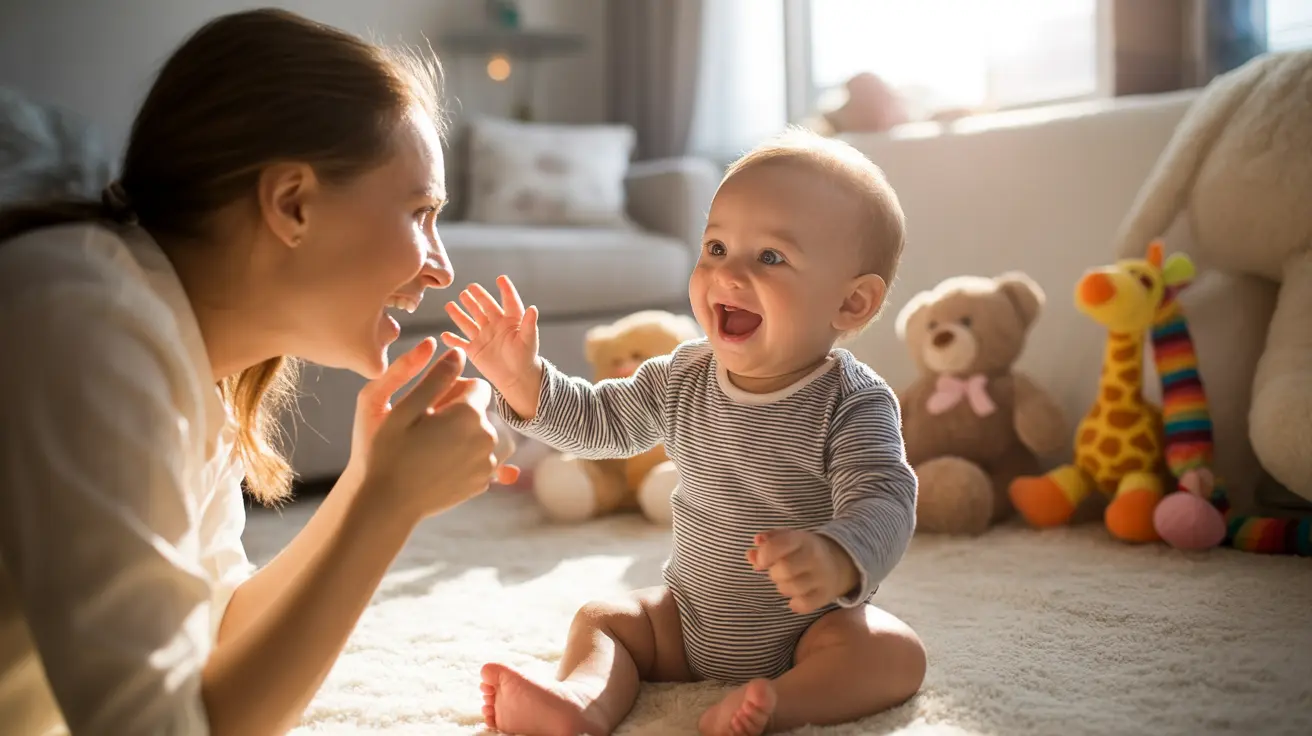A baby's first laugh is one of the most heartwarming milestones in early development. This precious moment typically occurs between 2 and 4 months of age, marking an important step in your baby's social and emotional growth. Understanding when and why babies start laughing can help parents recognize and encourage this delightful developmental milestone.
As your little one begins to interact more with the world around them, their ability to express joy through laughter becomes an essential part of their communication toolkit. Let's explore the fascinating journey of your baby's first laughs and how you can nurture this important social skill.
The Timeline of Baby Laughter Development
Babies typically follow a predictable pattern in developing their ability to laugh. Around 6-8 weeks, you might notice your baby making small cooing sounds and social smiles. These early vocalizations set the stage for true laughter, which usually emerges between 2 and 4 months of age.
By 3 months, many babies have mastered the art of social laughter, responding to familiar faces and simple interactions. This progression continues as they develop, with laughter becoming more frequent and sophisticated throughout their first year.
Early Signs of Social Laughter
Before full-blown laughter emerges, babies show several indicators that they're developing their sense of humor:
- Social smiling in response to faces and voices
- Cooing and making happy sounds
- Showing excitement through body movements
- Mimicking facial expressions
- Engaging in eye contact during playful interactions
Understanding Why Babies Laugh
Baby laughter isn't just cute – it serves important developmental purposes. When babies laugh, they're actually practicing crucial social skills and strengthening bonds with their caregivers. This early social interaction helps build neural pathways that support emotional development and communication.
The Science Behind Baby Giggles
Laughter in babies is closely tied to their growing understanding of social interactions and unexpected events. When babies laugh at peek-a-boo or silly faces, they're demonstrating their grasp of social patterns and their ability to anticipate and enjoy surprises.
Encouraging Your Baby's Laughter
Parents can help promote their baby's laughter development through various engaging activities:
- Playing peek-a-boo games
- Making funny faces and sounds
- Gentle tickling (being mindful of your baby's comfort)
- Singing songs with hand movements
- Reading interactive books
- Mimicking your baby's sounds and expressions
When to Seek Professional Advice
While every baby develops at their own pace, certain signs might warrant a conversation with your pediatrician:
- No social smiling by 2 months
- Lack of any vocalization by 3 months
- No laughter or joyful expressions by 6 months
- Limited or no response to social interactions
Frequently Asked Questions
When do babies typically start laughing for the first time?
Babies usually start laughing between 2 and 4 months of age, though some may begin slightly earlier or later. This milestone typically follows the development of social smiling, which begins around 6-8 weeks.
What are the signs that my baby is developing social laughter?
Early signs include social smiling, making cooing sounds, responding to faces with excitement, engaging in eye contact, and showing physical responses to pleasant interactions like kicking legs or waving arms.
How can I encourage my baby to laugh and giggle more?
Engage in interactive play like peek-a-boo, make funny faces, use gentle tickling, sing songs with movements, and respond positively to your baby's attempts at communication. Consistent, positive interactions help encourage laughter development.
Is it normal if my baby hasn't started laughing by 6 months?
While most babies laugh by 4 months, some may take longer. If your baby hasn't started laughing by 6 months, consult your pediatrician to ensure proper social and emotional development.
Why do babies laugh during games like peekaboo?
Babies laugh during peek-a-boo because they're learning about object permanence and enjoying the element of surprise. This game helps them understand that things (and people) continue to exist even when out of sight, making the "reappearance" exciting and amusing.




